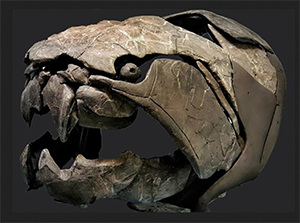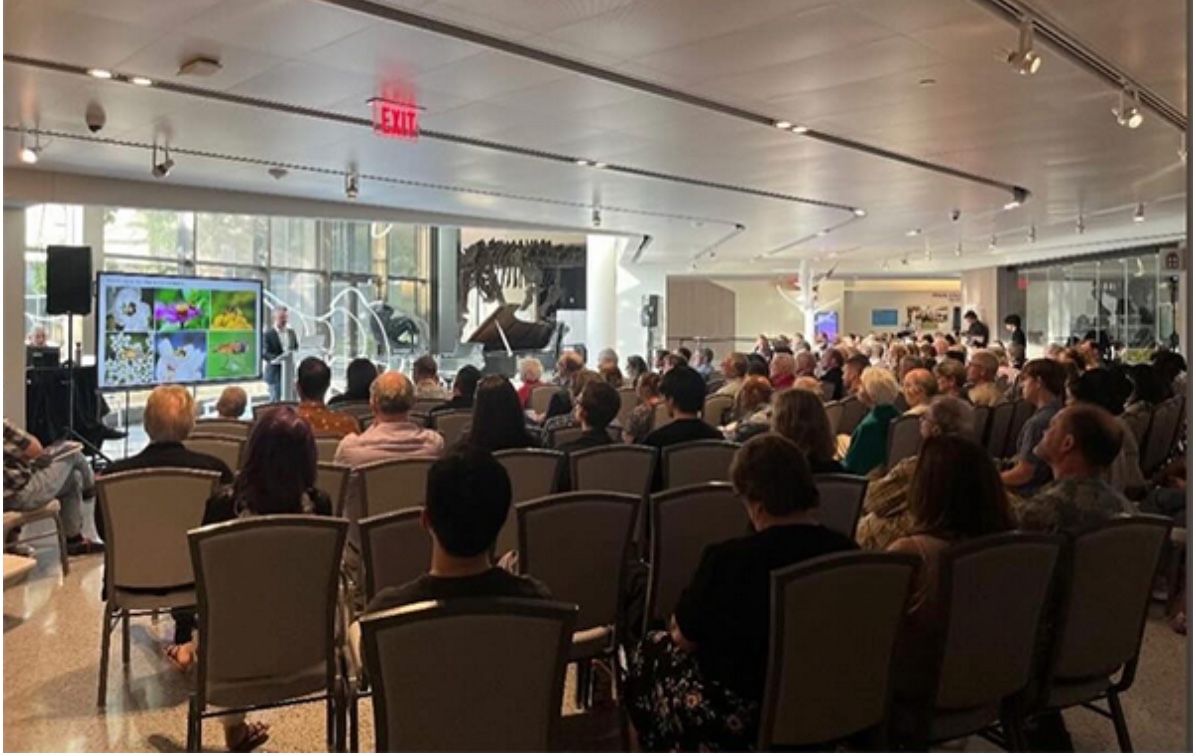by Stephanie Manning

The ENCORE Music & Ideas Festival drew a packed crowd at the Cleveland Museum of Natural History on June 15, and audience members were in for a treat at this concert in the visitor hall. The skeleton of Dunk may have been the closest to the action, but the bright and airy space was filled with other neat creatures for attendees to peruse. (On the left was a reconstruction of Lucy, the most famous human ancestor fossil, and to the right were the bones of Happy, a “reptile hipped” dinosaur.)
“Natural history informs the now,” the Museum’s chief science officer Gavin Svenson told the audience during his feature presentation, calling the connection between art and science “fundamental.” He set the stage for the program by discussing his specialty: insects, “the little things that run the world.”

Also inspired by folk music was Grażyna Bacewicz’s Quartet for Four Violins, where the composer’s clever harmonies prevent any potential timbral monotony. Mihaela Martin, Brendan Shea, Jinjoo Cho, and Stephen Miakhy appeared to relish feeding off each other’s energy, especially in the cascading parts of the third-movement Allegro giocoso. The audience, along with many of the ENCORE Young Artists bussed in from Gilmour Academy, effusively cheered and whistled.
Partnered with pianist Hyunsoo Kim, Brendan Shea then stepped into a soloist role in Jean Sibelius’ Pieces for Violin and Piano — a composition that was inspired less by nature and more by Sibelius’ need to make some steady income. Shea shouldered most of the technical heavy lifting throughout the tricky four movements. He especially shone during the first-movement Danse caractéristique, turning on a dime between dramatic laments and toe-tapping dances.
The latter part of the program was more overtly based on the natural world, including a spellbinding performance of Johannes Donjon’s Rossignolet – The Nightingale by flutist Jasmine Choi and pianist Shuai Wang. The piece was clearly written by a flutist, for a flutist — and Choi spun an effortless invocation of this evocative bird.
Cellist Max Geissler returned to join Wang and Choi for the concert’s namesake, George Crumb’s Vox Balaenae (“Voice of the Whale”). As specified by the composer, the room darkened even further and blue lights — placed around the musicians’ feet — projected gorgeous ocean wave animations on the half-ceiling above. The trio also adhered to Crumb’s idea for the players to wear black masks.
The three players gave their all to the eerie, often sparse piece, highlighted by Geissler’s shimmering harmonics and Choi’s haunting singing into her instrument. Wang was a deft hand at the extended techniques required of the pianist, which were sufficiently menacing, and her sweeping arm movements gave the perfect amount of dramatic gravitas.
However, more unintentionally menacing was a strange, repeated thumping noise coming from outside the glass windows, like some kind of heavy item being dropped on the ground. By absolutely no fault of the musicians — who were clearly focused and unfazed — the fragile atmosphere of Crumb’s piece was unfortunately shaken. Still, there were definitely moments where the atmospheric spell reasserted itself, giving listeners the chance to picture ancient oceans — and possibly even the prehistoric Dunk, swimming high above this parcel of modern-day land.
Published on ClevelandClassical.com June 20, 2024.
Click here for a printable copy of this article



